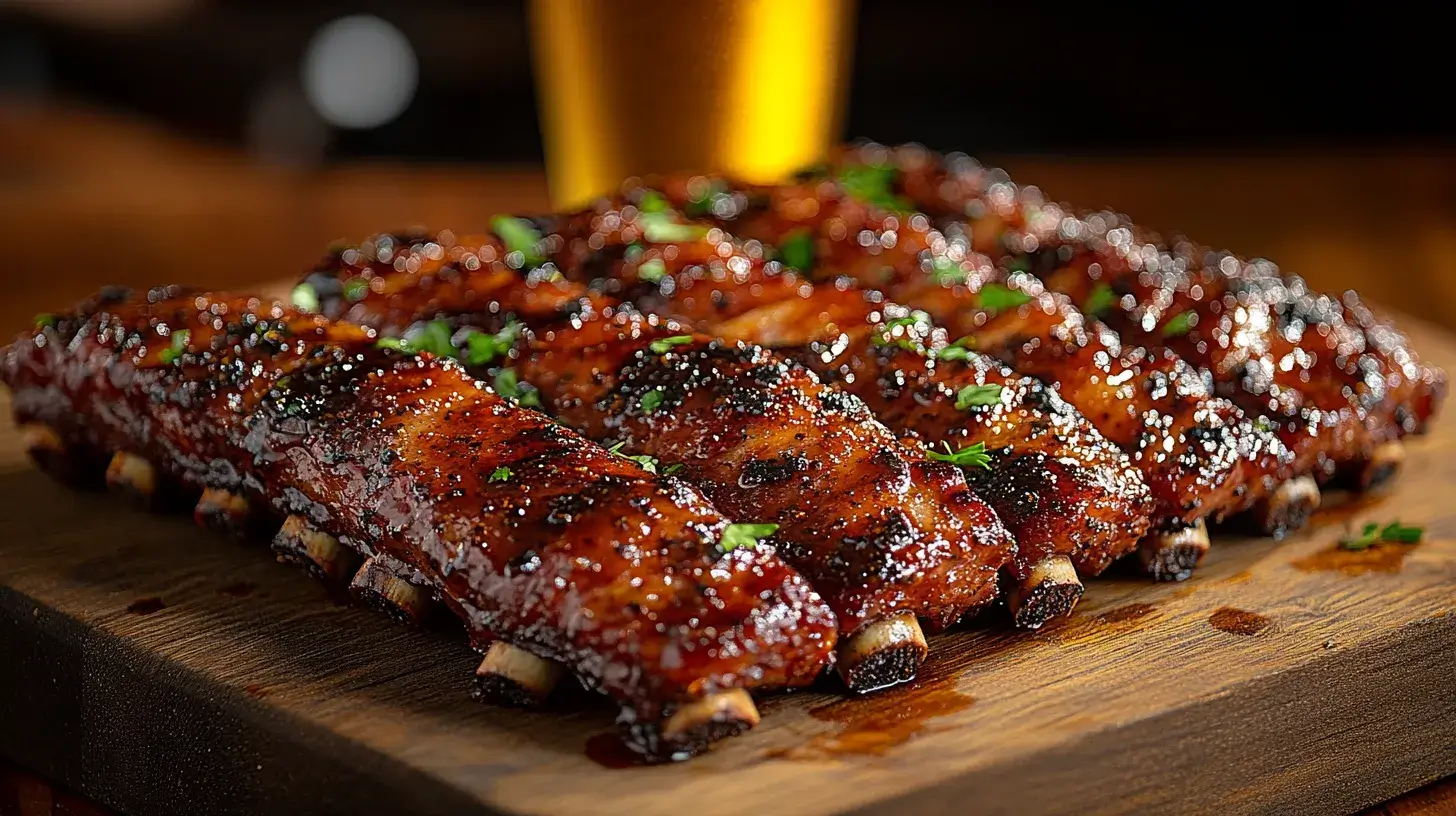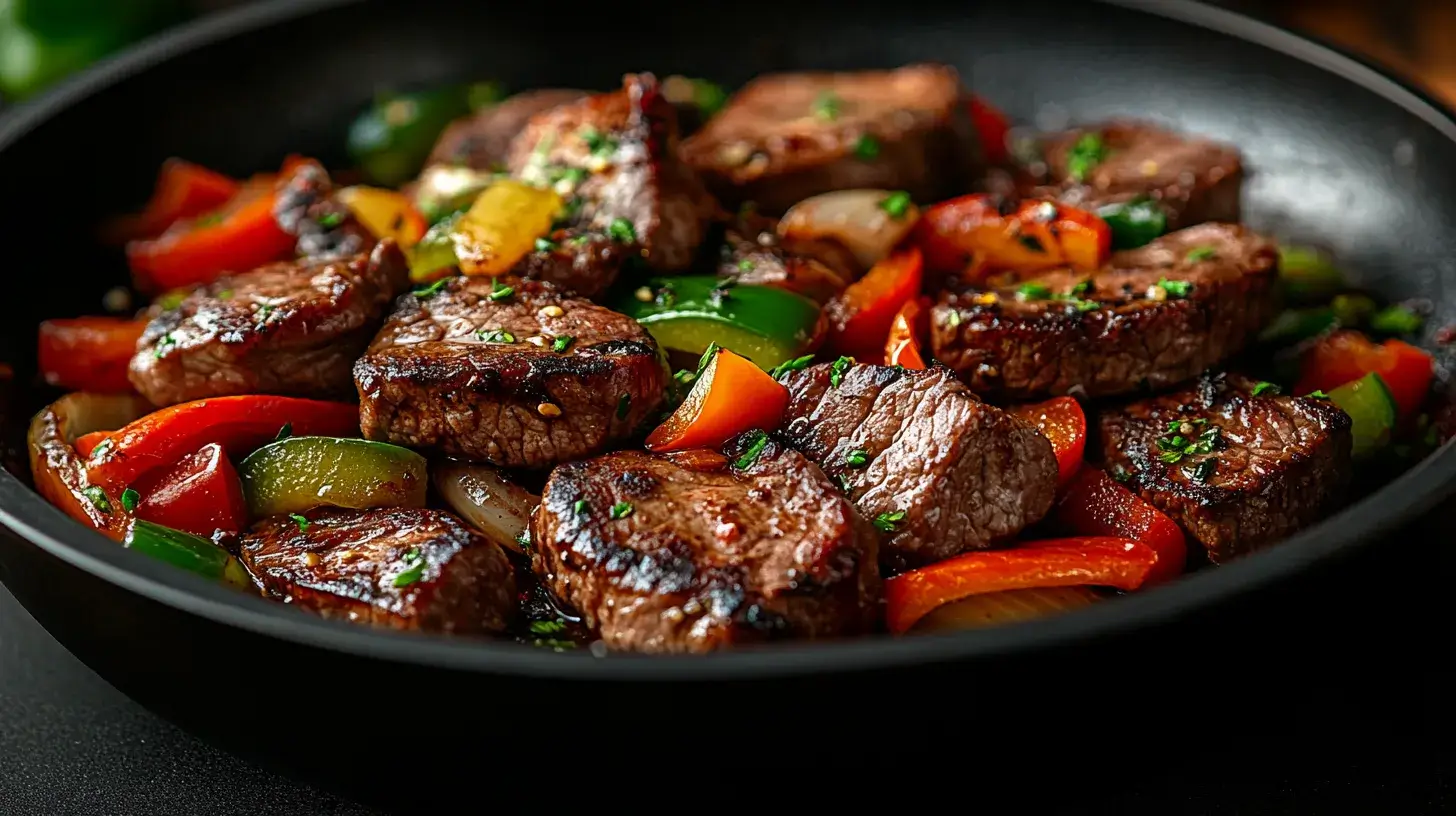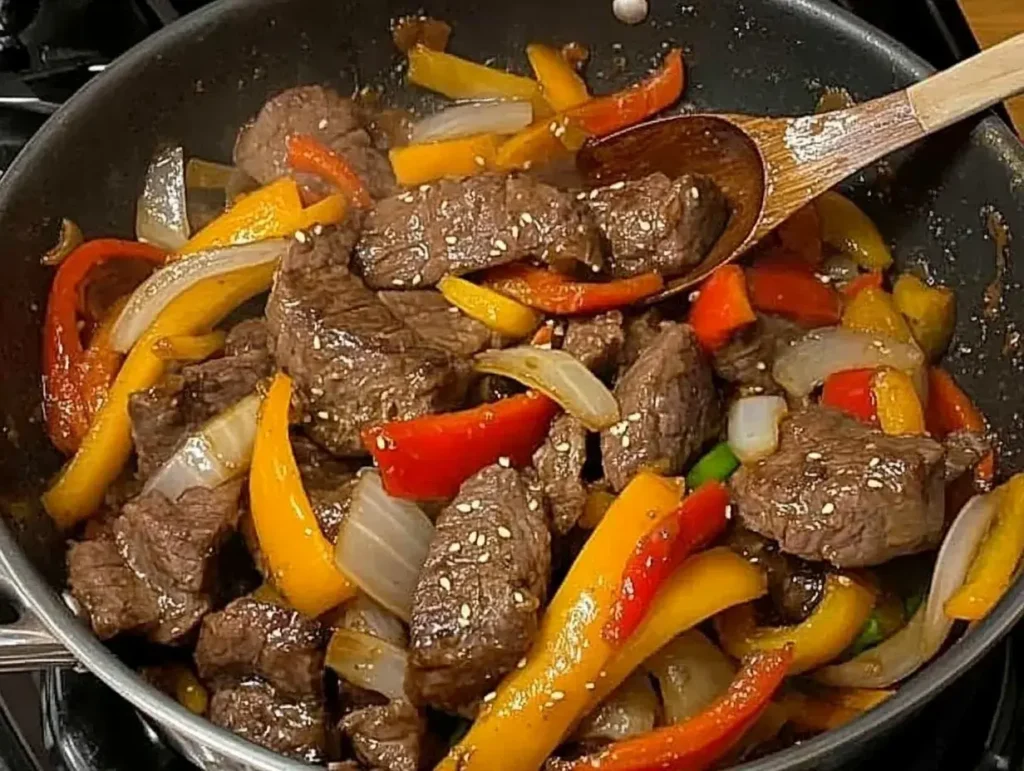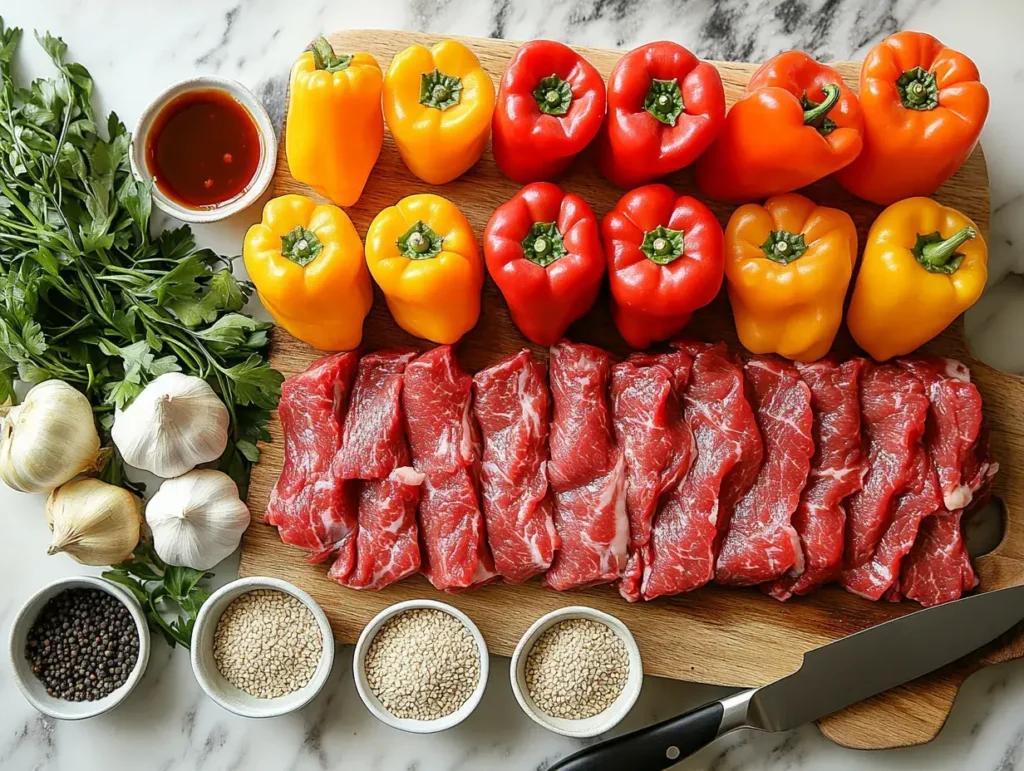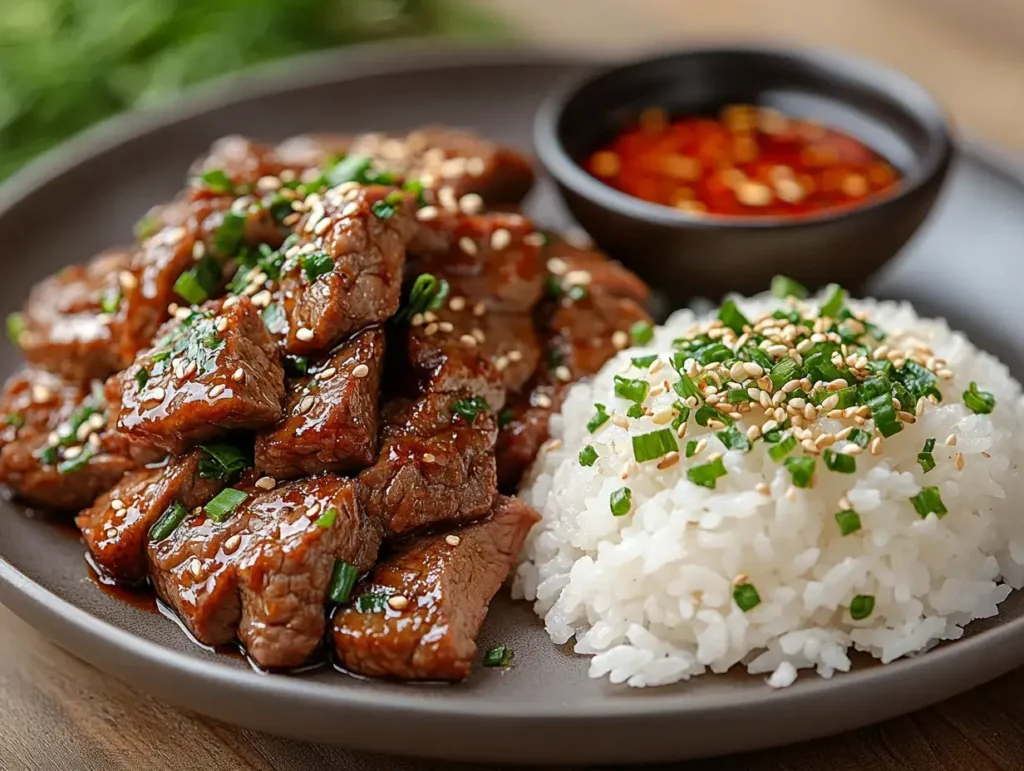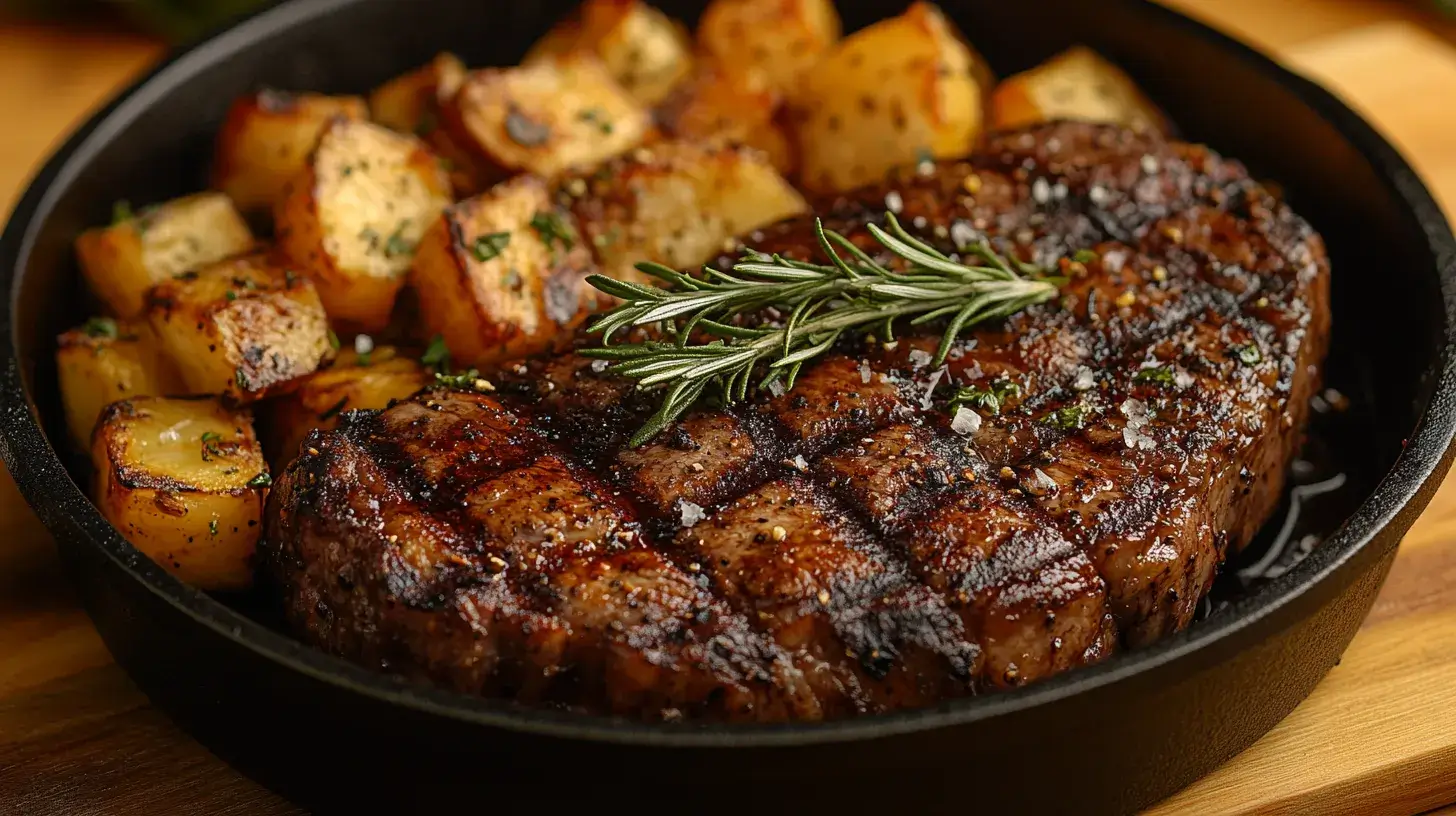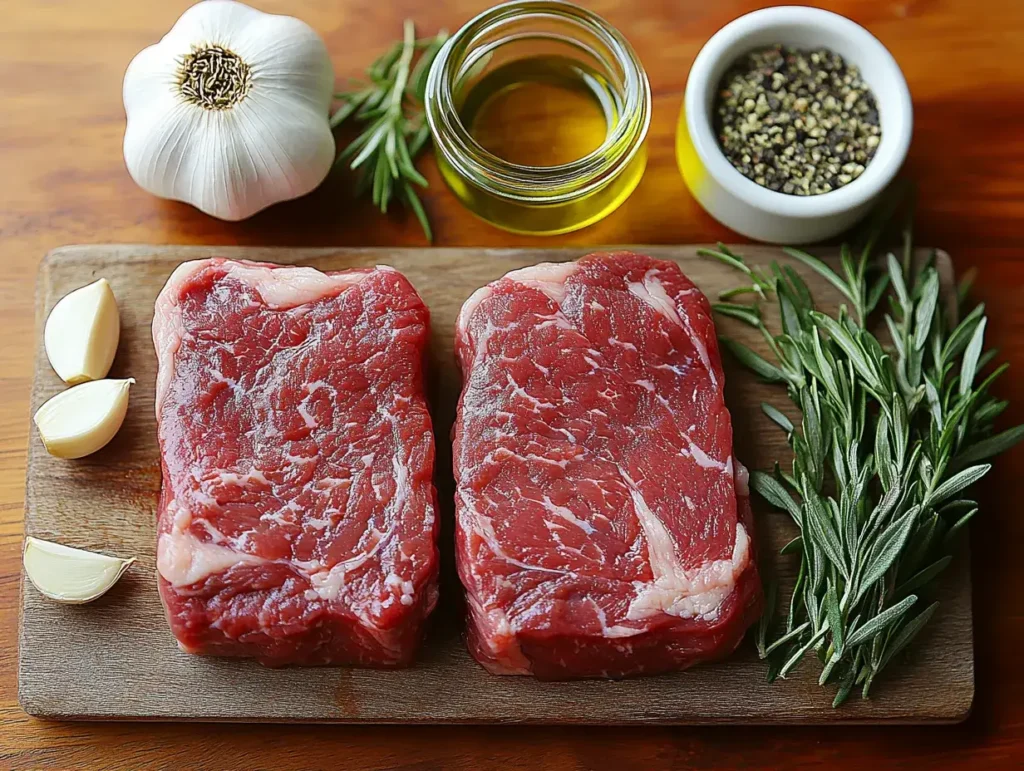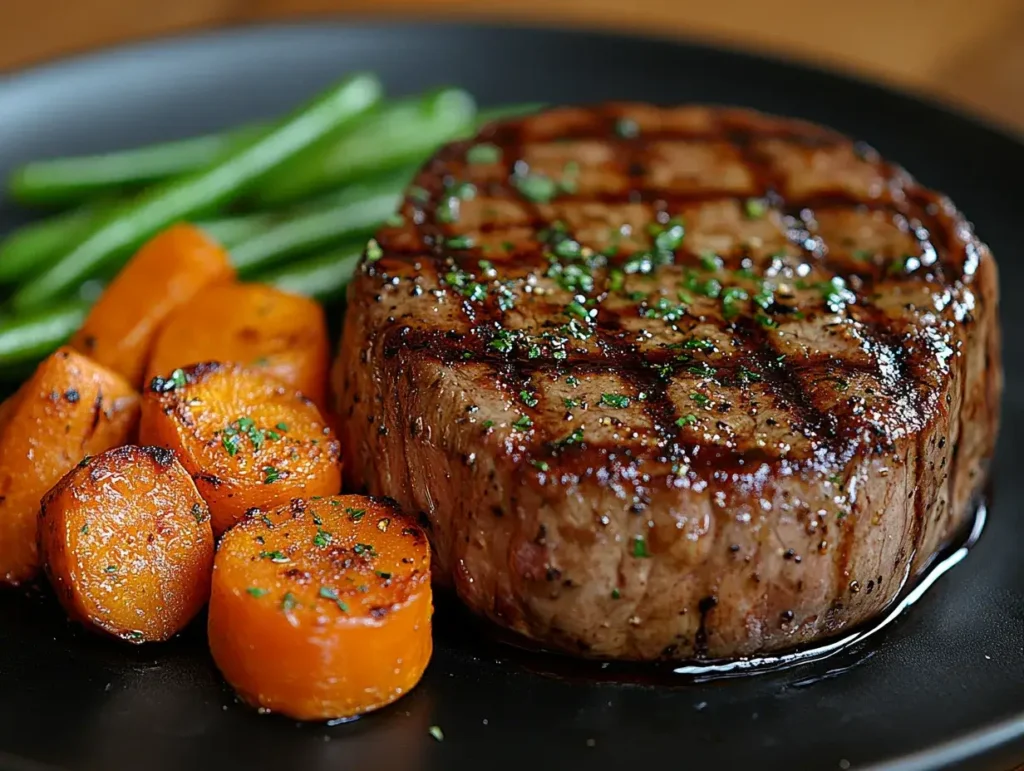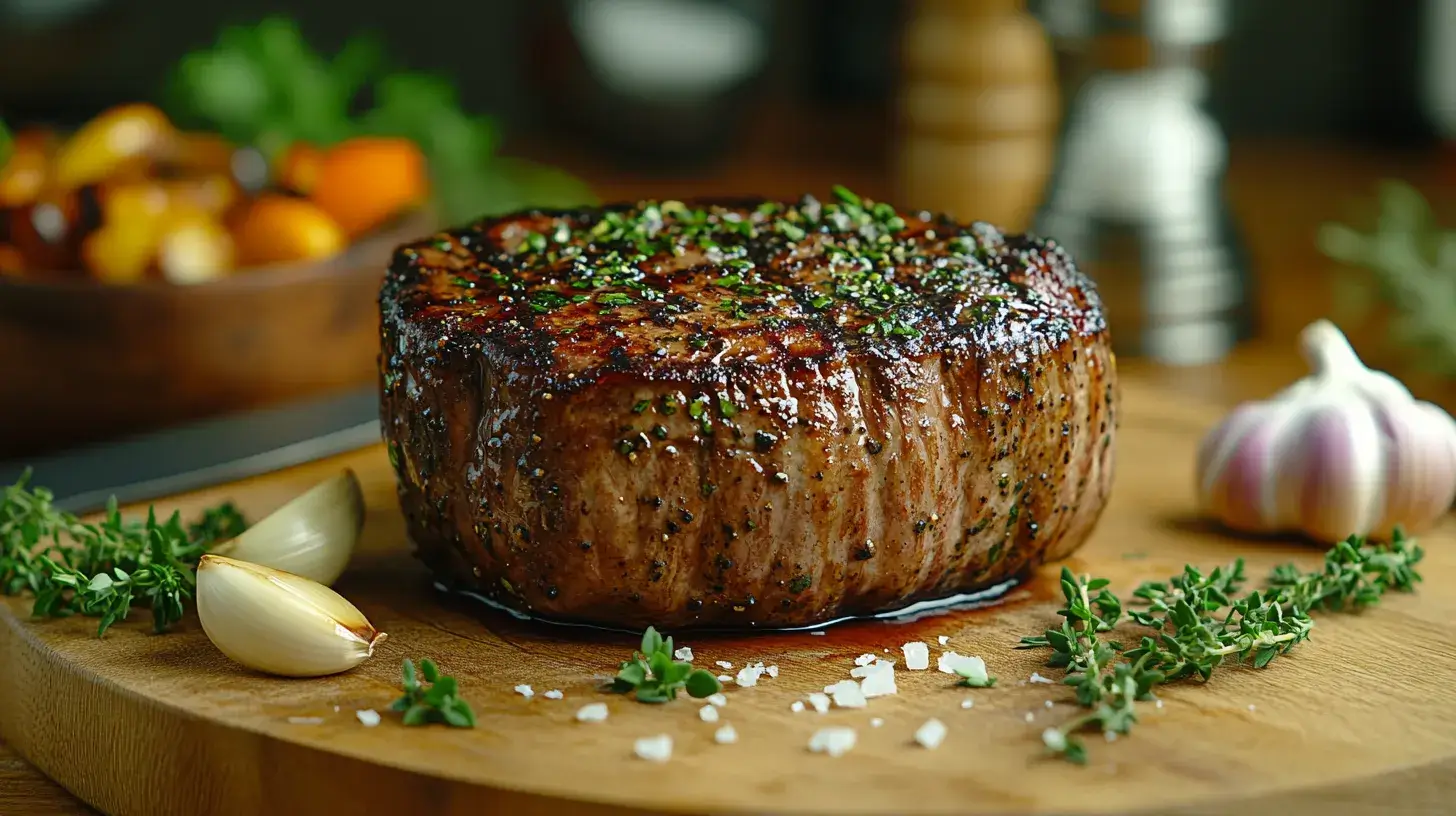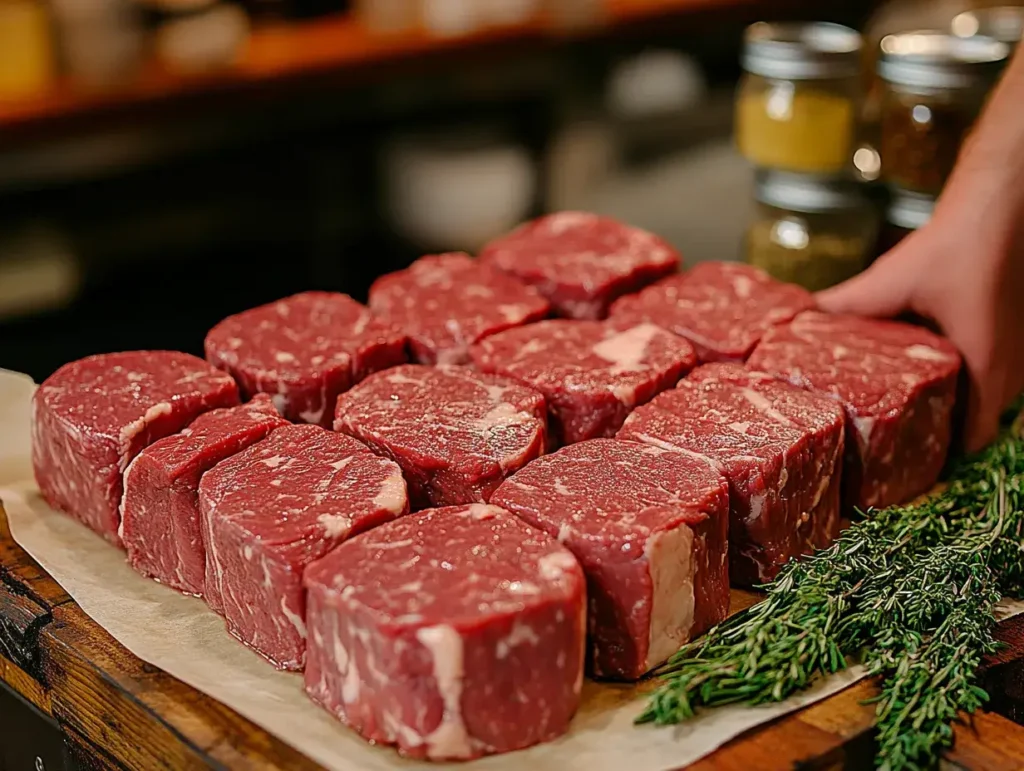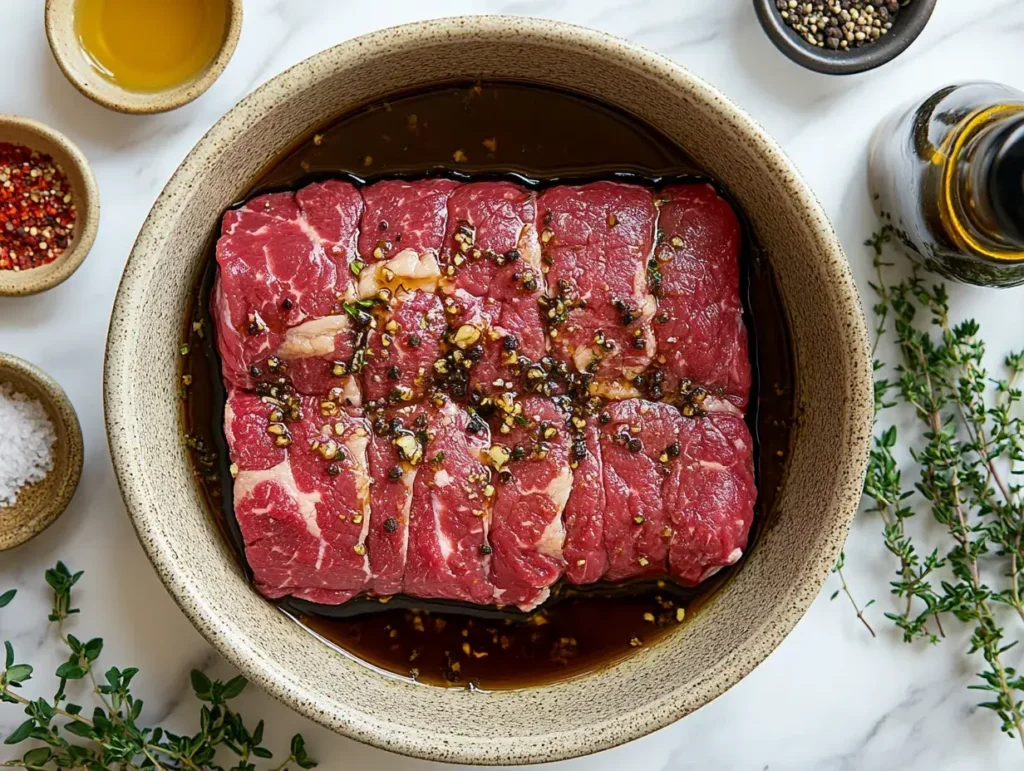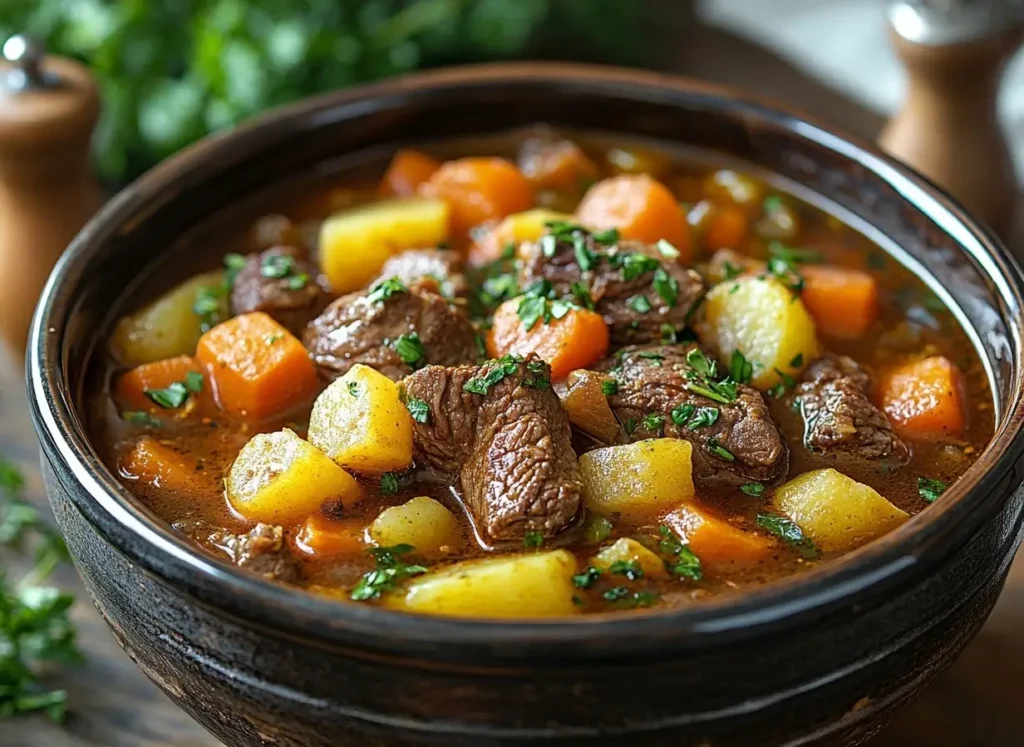Imagine sinking your teeth into juicy baby back ribs that are perfectly tender, infused with the rich flavors of beer, and seasoned with the bold zest of Montreal steak seasoning. Moreover, this baby back ribs with beer and Montreal steak seasoning recipe is not just a meal—it’s an experience that brings the smoky, savory goodness of a backyard BBQ right into your kitchen. Additionally, whether you’re a seasoned grill master or a home cook looking to impress, this recipe is easy to follow and promises delicious results every time. Therefore, let’s dive into the steps that will transform ordinary ribs into a mouthwatering masterpiece your family and friends will rave about!
Table of Contents
1. Gathering Your Ingredients
1.1 Essential Ingredients for Juicy Ribs
To create succulent baby back ribs with beer and Montreal steak seasoning, you need to start with the right ingredients. Here’s what you’ll need:
- Baby Back Ribs: Choosing the right cut is crucial for tenderness. Look for ribs with a good amount of meat and minimal fat.
- Montreal Steak Seasoning: This blend adds depth and a savory kick to your ribs.
- Beer Selection: Opt for a lager or ale to enhance the taste without overpowering the flavors.
1.2 Additional Flavor Enhancers
Enhancing your ribs with a few extra ingredients can elevate the flavor profile:
- Barbecue Sauce: Selecting the perfect sauce complements the savory seasoning.
- Honey or Brown Sugar: Adds a sweet glaze that balances the spices.
- Garlic and Onion Powder: These boost the seasoning profile, adding more layers of flavor.
1.3 Tools and Equipment Needed
Having the right tools makes the cooking process smoother:
- Meat Thermometer: Ensures your ribs reach the perfect doneness.
- Rib Racks: Helps in arranging ribs evenly for uniform cooking.
- Aluminum Foil: Retains moisture during baking, keeping your ribs juicy.
1.4 Table: Ingredients List
| Ingredient | Quantity |
|---|---|
| Baby back ribs | 2 racks (about 4 lbs) |
| Montreal steak seasoning | 3 tablespoons |
| Beer (lager or ale) | 1 bottle (12 oz) |
| Barbecue sauce | 1 cup |
| Honey | 2 tablespoons |
| Brown sugar | 2 tablespoons |
| Garlic powder | 1 teaspoon |
| Onion powder | 1 teaspoon |
| Salt and pepper | To taste |
2. Preparing the Ribs
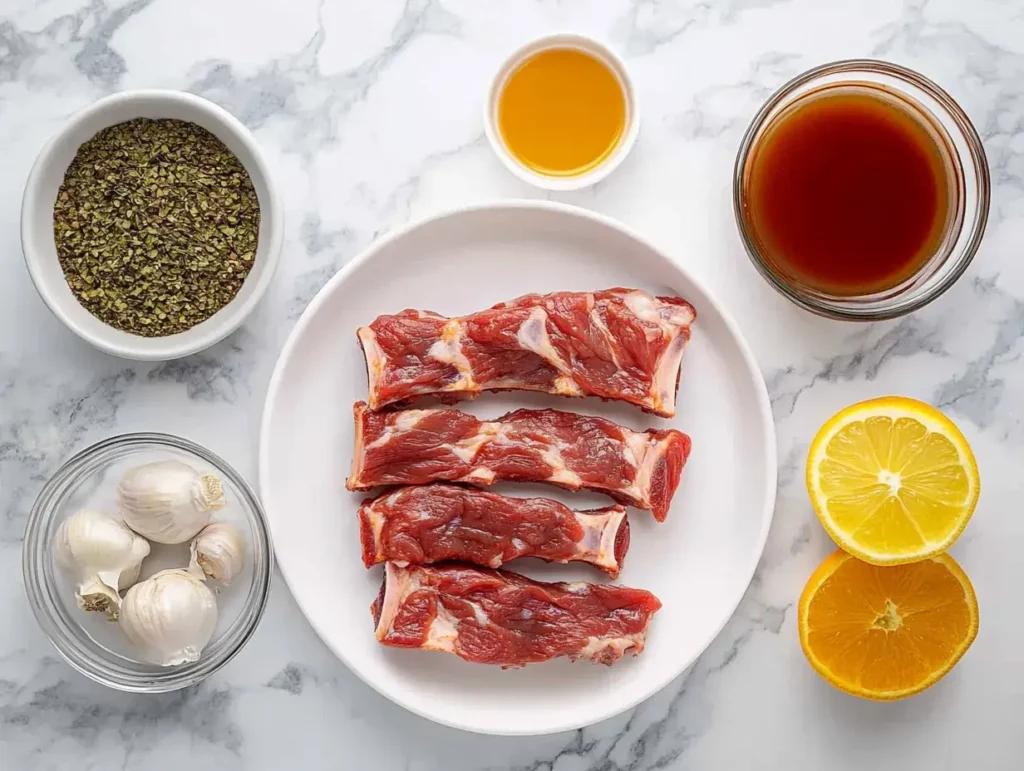
2.1 Cleaning and Trimming the Ribs
Before you start, it’s essential to prepare your ribs properly:
- Removing the Membrane: Flip the ribs bone-side up and slide a knife under the membrane. Use a paper towel to grip and pull it off for easy removal.
- Trimming Excess Fat: Trim any large pieces of fat to ensure lean and flavorful ribs.
2.2 Applying the Montreal Steak Seasoning
Seasoning is key to flavorful ribs:
- Even Coating: Sprinkle the Montreal steak seasoning evenly over both sides of the ribs. Massage it in to ensure thorough coverage.
- Marinating Time: Allow the ribs to marinate for at least 2 hours, preferably overnight, to let the flavors penetrate the meat.
2.3 Marinating with Beer
Beer not only adds flavor but also helps tenderize the meat:
- Beer Selection: Choose a lager or ale for a balanced taste. Each type of beer can impart a different flavor profile to the ribs.
- Marinating Process: Place the seasoned ribs in a large container and pour the beer over them. Ensure the ribs are well-covered and refrigerate for the recommended time.
2.4 Resting the Ribs
After marinating, let your ribs rest:
- Importance of Resting: Resting enhances tenderness by allowing the juices to redistribute.
- Covering and Refrigeration: Cover the container and refrigerate the ribs for at least 2 hours, or overnight for best results.
3. Cooking Methods for Baby Back Ribs
Choosing the right cooking method can truly make or break your ribs. Moreover, each technique imparts its own unique flavor and texture, thereby allowing you to customize your baby back ribs with beer and Montreal steak seasoning to your personal taste. For instance, here we’ll delve deeper into three popular methods: oven baking, grilling, and smoking. Additionally, we’ll compare these methods to help you decide which one suits your needs best.
3.1 Oven-Baked Baby Back Ribs
Oven baking is a reliable and straightforward method that ensures consistent results every time. It’s especially great for those who prefer a hands-off approach without compromising on flavor or tenderness.
Preheating and Setup
First, preheat your oven to 300°F (150°C). This low and slow temperature is key to achieving tender ribs. While the oven is heating, prepare a baking sheet by placing a rib rack on it. If you don’t have a rib rack, you can use a wire cooling rack to elevate the ribs, allowing heat to circulate evenly around them.
Baking Instructions
Place your prepared ribs on the rack, bone side down. Cover the ribs tightly with aluminum foil. This creates a steamy environment that helps the ribs cook evenly and retain moisture. Bake the ribs in the preheated oven for 2.5 to 3 hours. You’ll know they’re done when the meat starts to pull away from the bones and becomes tender.
Wrapping in Foil
Wrapping the ribs in foil is a crucial step in this method. It retains moisture, preventing the ribs from drying out. Additionally, the foil helps to trap the flavors from the beer and seasoning, infusing the meat with a rich, savory taste. For an extra layer of flavor, you can add a splash of beer inside the foil packet before sealing it.
Tips for Oven-Baked Ribs
- Check for Tenderness: After the initial baking time, gently twist a bone to see if the meat is tender. If it’s not quite there, rewrap and bake for an additional 30 minutes.
- Broil for a Finish: If you prefer a bit of a crispy exterior, uncover the ribs during the last 10 minutes of baking and switch your oven to broil. Keep a close eye to prevent burning.
3.2 Grilling Baby Back Ribs with Beer
Moreover, grilling introduces a delightful smoky flavor that oven baking simply can’t replicate. Additionally, this method is perfect for those who enjoy the process of grilling and the unique taste it imparts to the ribs. Furthermore, grilling allows you to engage more interactively with your cooking, making it a rewarding experience. Therefore, if you prefer a hands-on approach and crave that authentic BBQ smokiness, grilling is the ideal choice for your baby back ribs with beer and Montreal steak seasoning.
Preparing the Grill
First, start by setting up your grill for indirect heat. This involves arranging the coals or burners on one side of the grill, thereby leaving the other side cooler. By doing so, indirect heat ensures that the ribs cook slowly without direct exposure to the flames, which can cause burning. Consequently, this method helps achieve tender and evenly cooked ribs without the risk of charring. Additionally, maintaining a consistent temperature is crucial, therefore using a reliable grill thermometer can help you monitor and adjust the heat as needed. Moreover, setting up the grill correctly not only prevents burning but also enhances the overall smoky flavor of your baby back ribs with beer and Montreal steak seasoning.
Grilling Techniques
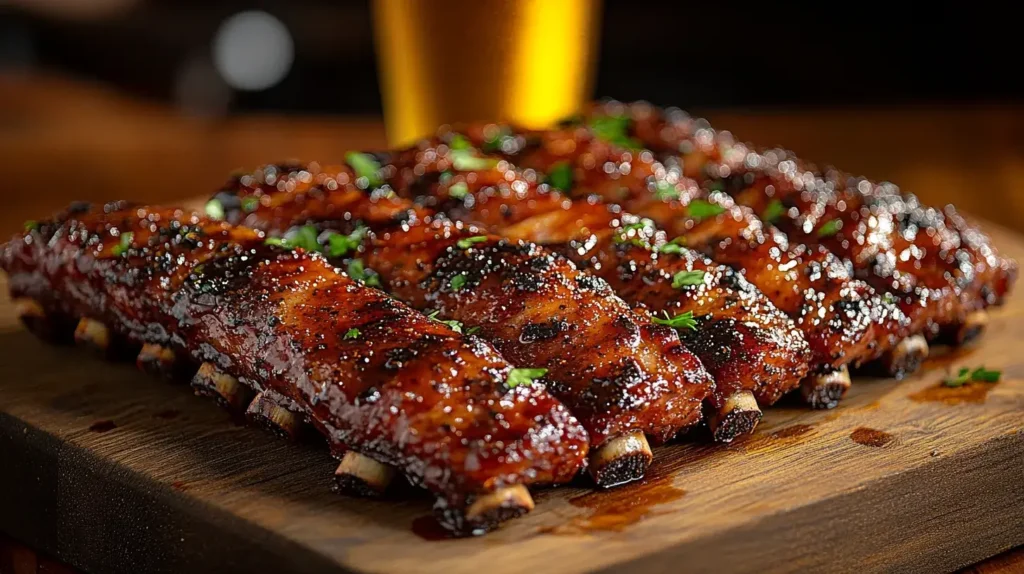
Place the ribs on the cool side of the grill, bone side down. Close the lid and maintain a steady temperature of around 250°F (121°C). Cook the ribs for 2 to 3 hours, turning them occasionally to ensure even cooking. Maintaining a consistent temperature is essential for tender, juicy ribs.
Basting with Beer Mixture
Occasionally baste the ribs with your beer marinade to keep them moist and enhance their flavor. You can use a brush or a spray bottle for this purpose. Basting not only adds moisture but also helps the seasoning penetrate deeper into the meat, resulting in a richer taste.
Tips for Grilling Ribs
- Control the Heat: Use a thermometer to monitor the grill’s temperature. Too much heat can dry out the ribs, while too little can result in undercooked meat.
- Add Wood Chips: For an extra smoky flavor, add wood chips like hickory or apple to your grill. Soak them in water for at least 30 minutes before adding to prevent them from burning too quickly.
- Avoid Flare-Ups: Keep a spray bottle of water nearby to manage any flare-ups caused by dripping fat.
3.3 Smoking Baby Back Ribs
Smoking is the ultimate method for infusing deep, rich flavors into your ribs. This technique requires a bit more time and attention but rewards you with exquisitely tender and flavorful meat.
Using a Smoker
Begin by preheating your smoker to 225°F (107°C). Choose wood chips that complement the flavor of your ribs, such as hickory for a strong smoky taste or apple for a slightly sweet aroma. Place the ribs in the smoker, bone side down, ensuring they are not touching the sides to allow smoke to circulate freely.
Smoke Flavor Infusion
Smoke the ribs for 4 to 5 hours, adding wood chips as needed to maintain a consistent smoke throughout the cooking process. The slow exposure to smoke allows the ribs to absorb the flavors deeply, resulting in a complex and satisfying taste.
Cooking Duration
Patience is key with smoking. The extended cooking time at a low temperature ensures that the ribs become incredibly tender, with the meat easily pulling away from the bones. To test for doneness, insert a meat thermometer into the thickest part of the ribs; they should reach an internal temperature of 195°F (90°C).
Tips for Smoking Ribs
- Maintain Consistent Temperature: Fluctuations in temperature can affect the tenderness of the ribs. Use a reliable thermometer to monitor and adjust as needed.
- Spritzing with Beer: Every hour or so, spritz the ribs with a mixture of beer and apple juice to keep them moist and enhance the flavor.
- Rest Before Serving: After smoking, let the ribs rest for about 20 minutes. This allows the juices to redistribute, ensuring every bite is juicy and flavorful.
3.4 Comparison of Cooking Methods
Each cooking method offers unique benefits and caters to different preferences and setups. Here’s a detailed comparison to help you choose the best approach for your baby back ribs with beer and Montreal steak seasoning recipe.
Oven vs. Grill vs. Smoker
| Method | Pros | Cons |
|---|---|---|
| Oven Baking | – Easy and consistent results- Minimal setup- Great for beginners | – Lacks smoky flavor- Less interactive |
| Grilling | – Adds a smoky flavor- Interactive cooking- Versatile | – Requires more attention- Weather dependent |
| Smoking | – Deep, rich smoky flavor- Extremely tender meat- Authentic BBQ taste | – Time-consuming- Requires specialized equipment |
Flavor Profiles
- Grilling and Smoking: Both methods impart a smoky taste to the ribs, but smoking offers a more intense and layered smoky flavor. Grilling provides a slightly charred exterior with a subtle smokiness, especially if you use wood chips.
- Oven Baking: This method keeps the flavors more contained, allowing the beer and Montreal steak seasoning to shine without the added smokiness. It’s ideal for those who prefer a cleaner, more straightforward flavor profile.
Ease of Preparation
- Oven Baking: The simplest method with minimal hands-on time. Perfect for those who want a hassle-free cooking experience.
- Grilling: Requires more attention to maintain temperature and manage flare-ups. Ideal for those who enjoy the process of grilling and want to engage more with their cooking.
- Smoking: Demands the most time and equipment but rewards with unparalleled flavor and tenderness. Best suited for dedicated BBQ enthusiasts willing to invest the extra effort.
Choosing the Best Method for Your Setup
Consider the following factors when deciding which cooking method to use:
- Equipment Available: If you have a smoker, smoking your ribs can yield fantastic results. If not, oven baking or grilling are excellent alternatives.
- Time Constraints: Oven baking is quicker and less time-consuming compared to smoking. Grilling falls somewhere in between, depending on your setup and attention to detail.
- Desired Flavor: For the most authentic BBQ flavor, smoking is the way to go. If you prefer a simpler, yet still delicious method, oven baking is ideal. Grilling offers a balance between the two, adding some smokiness without the complexity of smoking.
Enhancing Your Cooking Method
Regardless of the method you choose, there are additional tips and tricks to elevate your baby back ribs with beer and Montreal steak seasoning recipe.
Using Marinades and Bastes
Incorporate a beer-based marinade or baste to infuse extra flavor and moisture into the ribs. This not only enhances the taste but also helps in tenderizing the meat.
Temperature Control
Maintaining a steady temperature is crucial for achieving tender ribs. Invest in a good quality meat thermometer to monitor internal temperatures accurately.
Resting the Meat
Allowing the ribs to rest after cooking is essential. This step lets the juices redistribute, ensuring each bite is juicy and flavorful.
Experimenting with Flavors
Don’t be afraid to experiment with different types of beer or seasoning blends. Each variation can bring a new dimension to your ribs, making the cooking process even more enjoyable.
4. Finishing Touches and Serving
Once your ribs are cooked to perfection, it’s time to add the final touches and serve them up.
4.1 Applying the Barbecue Sauce Glaze
A good glaze can take your ribs to the next level:
- Timing for Glaze Application: Apply the barbecue sauce during the last 30 minutes of cooking.
- Glazing Techniques: Brush the sauce evenly over the ribs and let it caramelize for a sticky, flavorful coating.
4.2 Resting After Cooking
Allow your ribs to rest before serving:
- Final Rest Period: Let the ribs rest for about 10 minutes after cooking to let the juices redistribute.
- Covering Ribs for Warmth: Tent the ribs with foil to keep them warm and moist.
4.3 Slicing the Ribs
Proper slicing ensures an appealing presentation:
- Proper Cutting Techniques: Use a sharp knife to cut between the bones for clean, even slices.
- Serving Presentation: Arrange the ribs on a platter and garnish with fresh herbs for an appetizing look.
4.4 Pairing with Side Dishes
Complete your meal with delicious sides:
- Coleslaw and Baked Beans: Classic BBQ sides that complement the rich flavors of the ribs.
- Cornbread and Grilled Vegetables: Adds variety and a touch of sweetness to the meal.
- Beverage Pairings: Craft beers, iced tea, or lemonade pair wonderfully with the smoky and savory flavors of the ribs.
5. Tips and Tricks for Perfect Ribs
Achieving perfectly juicy and flavorful ribs requires some insider tips:
5.1 Ensuring Maximum Tenderness
Tender ribs are the hallmark of a great recipe:
- Low and Slow Cooking: Cooking ribs at a low temperature for an extended period ensures tenderness.
- Moisture Retention Techniques: Using foil and marinades effectively keeps the ribs moist and succulent.
5.2 Flavor Boosters
Enhance the flavor profile of your ribs with these boosters:
- Additional Spices and Herbs: Consider adding paprika, cumin, or thyme to the seasoning mix for extra depth.
- Marinade Variations: Experiment with different types of beer or add ingredients like soy sauce or Worcestershire sauce to your marinade for unique flavors.
5.3 Troubleshooting Common Issues
Avoid common pitfalls with these solutions:
- Dry Ribs: Prevent dryness by not overcooking and ensuring proper moisture retention during cooking.
- Flavor Imbalance: Adjust seasoning and glaze quantities to achieve the perfect balance of savory and sweet.
- Cooking Time Adjustments: Adapt cooking times based on your oven or grill type to ensure ribs are cooked perfectly.
5.4 Storage and Reheating
Store and reheat your ribs without losing flavor:
- Storing Leftover Ribs: Refrigerate ribs in an airtight container for up to 3 days or freeze for longer storage.
- Reheating Techniques: Reheat ribs in the oven wrapped in foil to maintain moisture, or gently microwave them with a splash of water or sauce.
Frequently Asked Questions (FAQs)
Is Montreal steak seasoning good for ribs?
Yes, Montreal steak seasoning is excellent for ribs as it adds a robust and savory flavor that enhances the meat’s natural taste. Its blend of spices complements the richness of the ribs, making them more delicious and flavorful.
What is the best seasoning to put on ribs?
The best seasoning for ribs depends on your flavor preference. Popular options include Montreal steak seasoning, BBQ dry rubs, garlic and onion powders, and sweet spices like brown sugar. Experimenting with different blends can help you find your perfect match.
Which of the cooking methods is best for baby back ribs?
The best cooking method for baby back ribs is subjective and depends on your equipment and desired flavor. Oven baking is great for ease and consistency, grilling adds a smoky flavor, and smoking offers the most authentic BBQ taste. Each method can produce tender and juicy ribs when done correctly.
What is the difference between Montreal and Chicago steak seasoning?
Montreal steak seasoning typically includes garlic, coriander, black pepper, and dill, offering a robust and savory flavor. Chicago steak seasoning may have a different spice blend, often sweeter or with additional herbs. The exact differences can vary by brand, but Montreal seasoning is generally more aggressive and savory.
What are ribs usually served with?
Ribs are usually served with classic BBQ sides such as coleslaw, baked beans, cornbread, and grilled vegetables. These sides complement the rich and savory flavors of the ribs, creating a balanced and satisfying meal.
What would you have with barbecue ribs?
With barbecue ribs, you can enjoy a variety of sides like potato salad, macaroni and cheese, corn on the cob, and pickles. Additionally, beverages like craft beer, iced tea, or lemonade pair wonderfully with the smoky and savory flavors of the ribs.
Conclusion
Crafting the perfect juicy baby back ribs with beer and Montreal steak seasoning is both an art and a science. By carefully selecting your ingredients, mastering your cooking method, and adding those finishing touches, you can create a mouthwatering dish that stands out at any gathering. Whether you prefer the convenience of oven baking, the smoky allure of grilling, or the deep flavors from a smoker, this recipe offers flexibility and delicious results every time. So, gather your ingredients, follow these steps, and enjoy the delightful experience of serving tender, flavorful ribs that everyone will love. Happy cooking!

